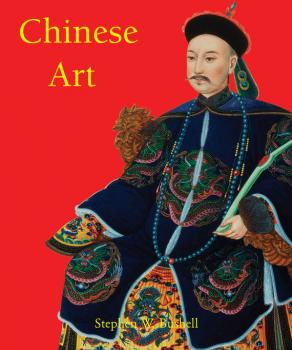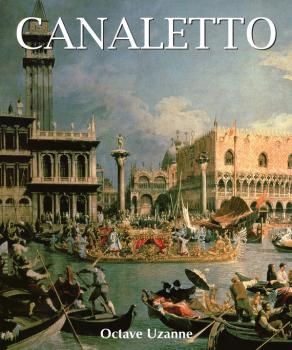Parkstone International Publishing
Все книги издательства Parkstone International PublishingBikini Story
It was in 1946 that the world first came to hear of a coral atoll in the Marshall Islands called Bikini. The following year, French couturier Louis Réard borrowed the name and applied it to a bathing costume for women. Breaking from decades of conformity, Réard dared to ‘undress’ women’s bodies in order to better emphasize what remained clothed – albeit in tiny wisps of material. By taking up the bikini as popular beachwear, women also found themselves thinking differently about their bodies. An ideal of perfection was reinforced by the appearance on the cinema screen of stars such as Marilyn Monroe, Brigitte Bardot and Ursula Andress, all of whom were featured in bikinis that accentuated their own curvaceous contours. More than a bathing costume, the bikini made its own contribution during the 1970s to the sexual revolution and to the changing relationship between men and women in general. This book investigates the history of the bikini and its effect on the evolution in the perception of women in society, as women regained responsibility for the way they look and laid claim once more to full sexual equality. A collection of images throughout this book illustrates this progression step-by-step over a period of more than 50 years.
Bauhaus. 1919-1933
The Bauhaus movement (meaning the “house of building”) developed in three German cities – it began in Weimar between 1919 and 1925, then continued in Dessau, from 1925 to 1932, and finally ended in 1932-1933 in Berlin. Three leaders presided over the growth of the movement: Walter Gropius, from 1919 to 1928, Hannes Meyer, from 1928 to 1930, and Ludwig Mies van der Rohe, from 1930 to 1933. Founded by Gropius in the rather conservative city of Weimar, the new capital of Germany, which had just been defeated by the other European nations in the First World War, the movement became a flamboyant response to this humiliation. Combining new styles in architecture, design, and painting, the Bauhaus aspired to be an expression of a generational utopia, striving to free artists facing a society that remained conservative in spite of the revolutionary efforts of the post-war period. Using the most modern materials, the Bauhaus was born out of the precepts of William Morris and the Arts and Crafts movement, introducing new forms, inspired by the most ordinary of objects, into everyday life. The shuttering of the center in Berlin by the Nazis in 1933 did not put an end to the movement, since many of its members chose the path of exile and established themselves in the United States. Although they all went in different directions artistically, their work shared the same origin. The most influential among the Bauhaus artists were Anni Albers, Josef Albers, Marianne Brandt, Marcel Breuer, Lyonel Feininger, Ludwig Hilberseimer, Paul Klee, Wassily Kandisky, and Lothar Schreyer. Through a series of beautiful reproductions, this work provides an overview of the Bauhaus era, including the history, influence, and major figures of this revolutionary movement, which turned everyday life into art.
American Graffiti
The first appearances of graffiti “tags” (signatures) on New York City subway trains in the early 1970s were discarded as incidents of vandalism or the rough, violent cries of the ignorant and impoverished. However, as the graffiti movement progressed and tags became more elaborate and ubiquitous, genuine artists emerged whose unique creativity and unconventional media captured the attention of the world. Featuring gallery and street works by several contributors to the graffiti scene, this book offers insight into the lives of urban artists, describes their relationship with the bourgeois art world, and discusses their artistic motivation with unprecedented sensitivity.
Utamaro
If sensuality had a name, it would be without doubt Utamaro. Delicately underlining the Garden of Pleasures that once constituted Edo, Utamaro, by the richness of his fabrics, the swan-like necks of the women, the mysterious looks, evokes in a few lines the sensual pleasure of the Orient. If some scenes discreetly betray lovers’ games, a great number of his shungas recall that love in Japan is first and foremost erotic.
Malevich
Pioneer of geometric abstract art and one of the most important members of the Russian Avant-garde, Malevitch experimented with various modernist styles. In reaction to the influence of Cubism and Futurism on artists in Russia, Malevitch in his art reduced the world of nature to basic elements and colours, such as in his Red Square (1915). He introduced his abstract, non-objective geometric patterns in a style and artistic movement he called Suprematism. One of the important names of the twentieth century, he however turned back to Primitivism once Russia’s communist leaders forced him to do so.
Icons
Icon painting has reached its zenith in Ukraine between the 11th and 18th centuries. This art is appealing because of its great openness to other influences – the obedience to the rules of Orthodox Christianity in its early stages, the borrowing from Roman heritage or later to the Western breakthroughs – combined with a never compromised assertion of a distinctly Slavic soul and identity. This book presents a handpicked and representative selection of works from the 11th century to the late Baroque period.
Chinese Art
Dealing not only with architecture, sculpture, and painting, but also with bronze and ceramics, this text offers a complete panorama of Chinese arts and civilisation. In his text, the author Bushell stresses the importance of knowing the society to understand the arts.
Canaletto
Canaletto began his career as a theatrical scene painter, like his father, in the Baroque tradition. Influenced by Giovanni Panini, he is specialised in vedute (views) of Venice, his birth place. Strong contrast between light and shadow is typical of this artist. Furthermore, if some of those views are purely topographical, others include festivals or ceremonial subjects. He also published, thanks to John Smith, his agent, a series of etchings of Cappricci. His main purchasers were British aristocracy because his views reminded them of their Grand Tour. In his paintings geometrical perspective and colours are structuring. Canaletto spent ten years in England. John Smith sold Canaletto’s works to George III, creating the major part of the Royal Canaletto Collection. His greatest works influenced landscape painting in the nineteenth century.
Émile Gallé
An icon in the Art Nouveau movement, Émile Gallé (1846-1904) sought to portray the beauty and simplicity of nature in his glass art. His designs, referred to as “poetry in glass”, range from fine pottery to jewellery and furniture. Everything Gallé produced contains traces of his masterful technique which reflects his innovativeness as an artist and his skill as a designer. In this rich text, Gallé unravels the beauty and ingenuity found within his own work.
Mucha
Born in 1860 in a small Czech town, Alphonse Mucha (1860-1939) was an artist on the forefront of Art Nouveau, the modernist movement that swept Paris in the 1910s, marking a return to the simplicity of natural forms, and changing the world of art and design forever. In fact, Art Nouveau was known to insiders as the “Mucha style” for the legions of imitators who adapted the master’s celebrated tableaux. Today, his distinctive depictions of lithe young women in classical dress have become a pop cultural touchstone, inspiring album covers, comic books, and everything in between. Patrick Bade and Victoria Charles offer readers an inspiring survey of Mucha’s career, illustrated with over one hundred lustrous images, from early Parisian advertisements and posters for Sandra Bernhardt, to the famous historical murals painted just before his death, at the age of 78, in 1939.









